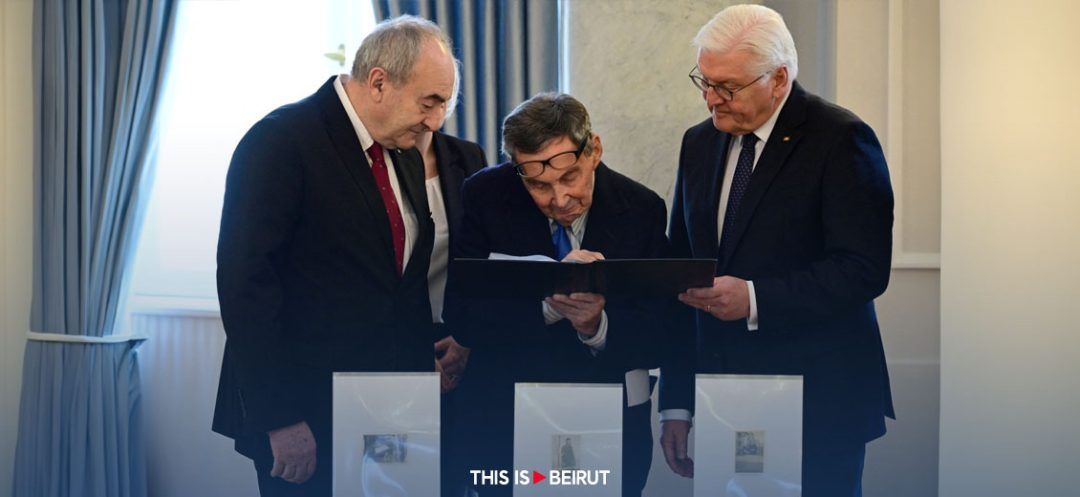
In a significant act of historical restitution, Germany has handed over 23 photographs from the Warsaw Ghetto to a Polish museum, a gesture underscoring the ongoing efforts to confront and preserve memories of one of history’s darkest chapters.
In a ceremony at Berlin's Bellevue Palace, a collection of photographs taken by a German nurse during the Holocaust was presented to the POLIN Museum of the History of Polish Jews.
The black-and-white images, capturing stark street scenes including the grim reality of bodies being transported on a handcart, were the work of Helmy Spethmann. Spethmann, a nurse from Eckernfoerde in northern Germany, was stationed at a military hospital in Warsaw in 1941 when she was 50 years old. The circumstances under which these photographs were taken suggest a harrowing glimpse into everyday life within the Warsaw Ghetto.
Decades later, these photos resurfaced, discovered by Spethmann’s niece, Ingelene Rodewald, hidden in the cover of an old photo album. Rodewald, now 102 years old, brought these photos to public attention when she presented them to President Frank-Walter Steinmeier during a meet-and-greet in Eckernfoerde in June 2023. This act of revealing the photos was significant, as it brought to light previously unseen images of a pivotal moment in history.
During the handover ceremony, President Steinmeier reflected on the weight of these images. “Even though we will probably never be able to truly come to terms with this period of history, we can and must ensure that the story these photos tell is not forgotten,” he remarked. This statement underscores the complex and ongoing process of Germany’s reckoning with its past, particularly the Holocaust.
The Warsaw Ghetto, established by the Nazis a year after their 1939 invasion of Poland, was the largest of its kind during World War II. Approximately 450,000 Jews were confined to a space of just over three square kilometers (1.2 square miles). The conditions within the ghetto were dire, with rampant starvation and disease, and most of its inhabitants were eventually sent to the Treblinka death camp.
The historical significance of these photos is further amplified by the fact that they show scenes from different seasons, suggesting that Spethmann visited the ghetto multiple times. President Steinmeier noted the mystery surrounding Spethmann’s intentions. “Why she did what she did, what she thought, whether she consciously wanted to bear witness to the horror—we don’t know. She did not confide in anyone and led a reclusive life until her death.”
The photos’ arrival at the POLIN Museum marks an important step in preserving the legacy and experiences of those who suffered in the Holocaust. Marian Turski, a 97-year-old Polish Auschwitz survivor and President of the International Auschwitz Committee, expressed gratitude to Steinmeier for the transfer of the photographs. “The Nazis destroyed the Jewish people. The Nazis destroyed most of our material goods. That is why it is so important to preserve all material and cultural goods and evidence from this period,” he stated.
This event also highlights the role of individuals in capturing and preserving history, often in unexpected ways. Spethmann, through her photographs, has posthumously provided a unique window into the realities of life in the Warsaw Ghetto, contributing to the broader historical narrative of World War II and the Holocaust.
The Warsaw Ghetto Uprising, which began on April 19, 1943, remains a significant symbol of resistance against the Nazis. It was the largest single act of Jewish resistance during World War II. President Steinmeier, in his address, also referred to his participation in the previous year’s commemorations of the uprising, where he became the first German president to ask forgiveness for the crimes committed there, further highlighting the continued efforts at reconciliation and remembrance.
The transfer of these photos to the POLIN Museum ensures that they will be preserved and accessible for future generations, serving as a testament to the atrocities of the Holocaust and the resilience of those who endured it. It also represents a gesture of acknowledgment and responsibility from Germany towards its past, a past that continues to shape the conscience and actions of the nation in the present.
In conclusion, the handover of Helmy Spethmann’s photographs to the POLIN Museum is more than a mere transfer of historical artifacts. It is a poignant reminder of the horrors of the Holocaust and a call to remember and learn from the past. As these images find their new home in a place dedicated to preserving Jewish history and culture, they serve as a powerful tool for education and reflection, ensuring that the stories they tell are not forgotten.
With AFP
Read more




Comments